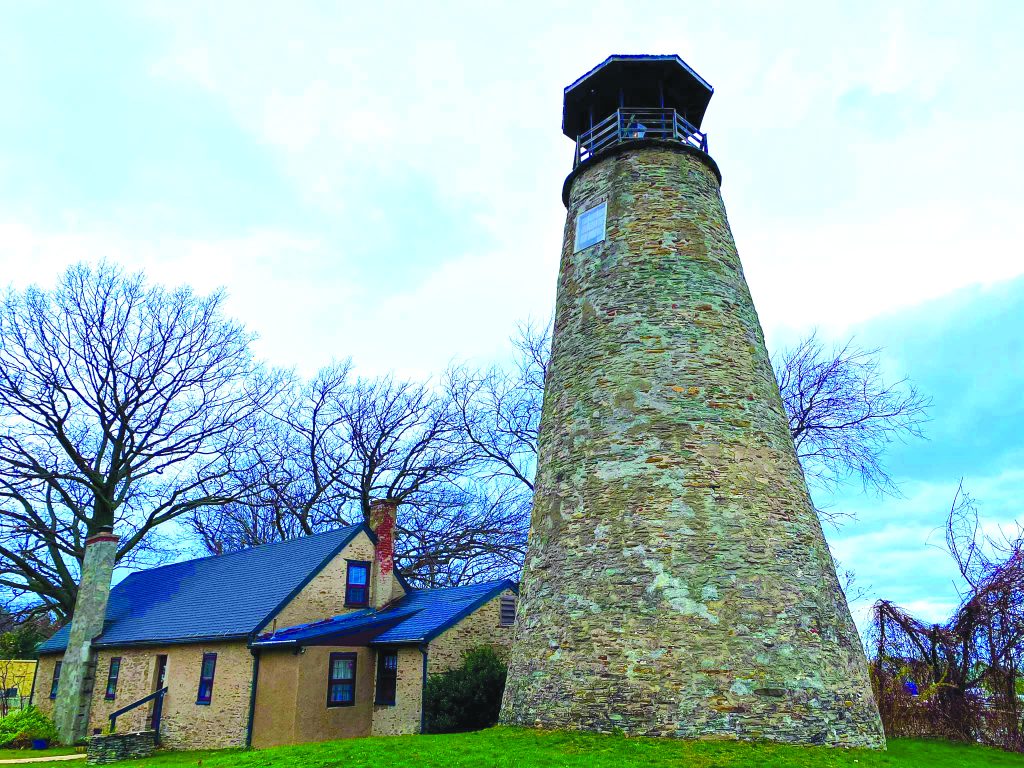In 1827 Portland Harbor was declared a port of entry. The Barcelona Harbor Lighthouse was erected to assist with the navigation on the waters, the shipping on Lake Erie, and for the opening of the Erie Canal. Everything moved on the waters prior to an age when the roads and highways were created. Towns sprang up at harbors where ships came in to drop off people and goods. This was the case at Portland Harbor in Chautauqua County, New York. This harbor was active in the 1800’s. Congress declared Portland Harbor an official port of entry in 1827. The next year Congressman Daniel Garnsey persuaded Congress to finance $5,000 for a lighthouse.
The financing came through on May 23, 1828. The Congressman and judge William Peacock worked together. They selected a site overlooking Portland Harbor, from which was purchased from the Holland Land Company for $50. Judge Thomas Campbell of Westfield NY was hired to construct the tower.

Campbell built a conical 40-foot tower made of native rough-cut stone, and built a keeper’s house of 34 feet, also of the same stone, a well, and an outhouse. Campbell finished the work below budget at $3,456.78. The keeper’s house was a one-story building divided into two rooms. There was a chimney accessible to a fireplace in each room. The tower had an octagonal lantern made up of 21 glass lights, and also had three copper pieces at the bottom tier of each octagonal panel.
The lantern was made of 16 iron rafters and topped with a copper dome, with a ventilator. Inside of the lantern were eleven “Winslow Lewis” lamps, backed by 14-inch reflectors. It was originally fueled by whale oil. On July 5, 1830, the lighthouse was the first to be lit with natural gas.
Appointed by President Andrew Jackson, the station’s first keeper was Joshua Lane. He was a deaf superannuated clergyman. He earned a salary of $350 annum, and stayed there until he died in 1846. In January 1831, William Hart, a gunsmith and a mechanic was hired to provide the lighthouse with natural gas at all times.
That same year, many lighthouses in the nation were inspected by various members of the US Navy. The harbor had three docks and four warehouses in 1831. On October 15, 1844, a strong northeast wind had driven water on the lake, making the levels rise near the harbor. The winds shifted forcing the higher waters into town. It was known as The Great Storm of 1844. It affected lots of cities and towns in New York and causing damage to Buffalo Harbor. After the storm, Portland Harbor was rebuilt. After the rebuilding, the Buffalo and State Railroad came about in June 1849, to create a line from Buffalo NY to the Pennsylvania state line. A section of this line ran through Westfield NY and had a damaging effect on the Harbor.
Most of the trade that was done by ships was given to the railroad since it was less expensive. In 1855, the government recommended the lighthouse in Barcelona be discontinued. In 1859 it was officially discontinued due to changes in commerce and change of channels of harbors.
After its decommission, the roof was capped off with an octagonal wooden covering made of wood, leading to the lantern room. The property was vacant until 1872 when it was sold by Holland Company to George Patterson. On June 14, 1929, about 200 people gathered to celebrate the 100th anniversary of the Barcelona lighthouse. At the event, The Daughters of the American Revolution, the Patterson chapter presented a bronze plaque to the owner Catherine Patterson Crandell.
To this day, the plaque is mounted above the door to the tower. When the lighthouse was decommissioned in 1860, it remained dark until 1962. A new gas beacon had been installed in the tower. The Iroquois Gas Corporation did the pipe repairs and the National Fuel And Gas does the repairs and the mantles when it’s needed.The light is not used for navigation, but it is lit for historical purposes.
In 2008, New York State, office of parks and recreation, and the Historical Preservation bought the lighthouse. As of 2017, the keeper’s cottage is open as a museum. The tower cannot be ascended as of then.
